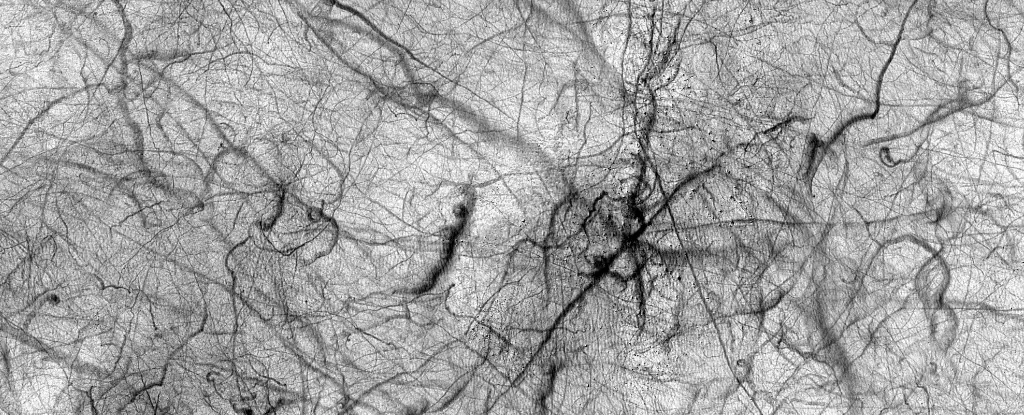In a captivating unveiling from NASA, fresh imagery capturing the dynamic phenomenon of dust devils on Mars offers a unique perspective on the planet’s atmospheric behavior. These swirling vortices are not just mere whims of nature but are pivotal to comprehending the complex Martian landscape. Taken by the HiRISE camera on the Mars Reconnaissance Orbiter in September 2022, the latest images depict a specific region within the Haldane Crater, where the telltale signs of dust devils actively reconfigure the surface. The transient nature of these dust devils, swirling into view and then dissipating, provides scientists a unique opportunity to analyze the erosion and sedimentation processes at play on Mars.
Understanding Martian dust is crucial; it serves as a key to unlocking how the planet’s atmosphere functions. The dust devils are integral in pushing the limits of what we know about Martian weather patterns. For example, studies of the trajectories left behind by these whirlwinds can help researchers evaluate how quickly dust deposits accumulate on the Martian surface over time. This emphasizes the larger context of Martian climate dynamics, where dust not only influences surface changes but may also play a role in future planetary habitability considerations.
Mars, often identified by its rust-colored terrain due to prevalent iron oxide, is the fourth planet from the Sun and sustains an atmosphere that starkly contrasts with that of Earth. Its thin atmospheric composition, predominantly carbon dioxide, leads to chilling average temperatures that hover around -60 °C. The stark environmental conditions portrayed in the Martian landscape—a blend of flat plains, enormous volcanoes, and the colossal canyon system Valles Marineris—reflect a planet rich in geological history that once potentially harbored liquid water and a thicker atmosphere that could have supported life.
Dust devils, while reminiscent of dust tornadoes on Earth, operate under different atmospheric mechanics due to Mars’ unique conditions. They originate from the sun-heated surface, causing warm air to rise quickly and swirl into a cyclone-like formation. The size and longevity of dust devils on Mars vary significantly; some may appear as fleeting spirals, while others can evolve into vast systems exceeding kilometers in diameter that can persist for extended periods. The occurrence and behavior of these dust devils allow scientists to evaluate the cycle of dust movement and its implications on Martian weather and climate.
Interestingly, dust devils have a dual impact on machinery deployed on the Martian surface. They can help clean solar panels and scientific instruments by blowing away accumulated dust, thereby improving efficiency. Simultaneously, they can obstruct solar absorption by depositing dust on these panels, posing challenges for sustained energy collection on future missions. Understanding this phenomenon becomes imperative in planning for the longevity and success of space exploration equipment.
The ongoing research into Martian dust devils hints at significant ramifications for future interplanetary missions. By meticulously tracking the movements and patterns of these dust phenomena, scientists can cultivate insights on dust deposition rates, surface erosion, and even climate shifts on Mars. This understanding is vital for optimizing mission durations and ensuring the protection of sensitive equipment from environmental challenges.
As teams of astronomers delve into the ever-fading remnants of dust devils, the quest for a nuanced understanding of Mars accelerates. The intricate dance of these dust whirlwinds, while beautiful, encapsulates a dynamic system that needs to be understood fully to navigate the challenges associated with human exploration and research on the Red Planet.
The study of dust devils on Mars not only enriches our understanding of its current state but also lays the groundwork for future exploration. As NASA continues to unveil the secrets of the Red Planet, such studies offer hope that we may one day answer the timeless question: did life ever exist on Mars? The relentless activity of these Martian dust devils might just be a key to unlocking that potential mystery.


Leave a Reply